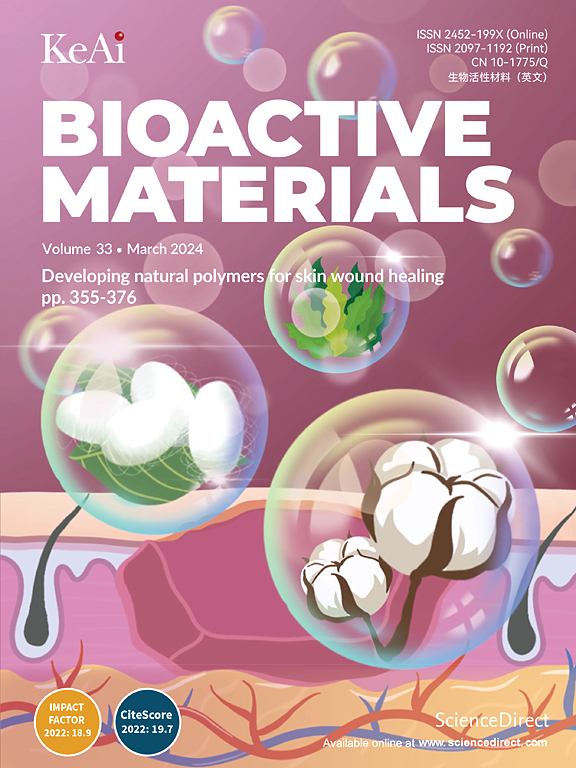Enhancing PD-1 blockade in NSCLC: Reprogramming tumor immune microenvironment with albumin-bound statins targeting lipid rafts and mitochondrial respiration
IF 18
1区 医学
Q1 ENGINEERING, BIOMEDICAL
引用次数: 0
Abstract
Non-small cell lung cancer (NSCLC) has shown limited response to immunotherapy, primarily due to an immunosuppressive tumor microenvironment characterized by hypoxia and lipid raft formation, which together inhibit T-cell infiltration and function, impeding effective immune responses. To address these challenges, we developed Abstatin, an albumin-bound fluvastatin formulation that targets lipid raft disruption and mitochondrial respiration inhibition, aiming to reduce hypoxia and destabilize lipid rafts to enhance T-cell activity within the tumor. Using bioinformatics analysis, in vitro assays, and in vivo studies in both murine and humanized PDX models, we demonstrated that Abstatin reprograms the NSCLC microenvironment by concurrently lowering hypoxia levels and lipid raft integrity, thereby restoring T-cell infiltration, enhancing cytotoxic T-cell function, and ultimately improving response to Anti-PD-1 therapy. Results showed that Abstatin significantly amplifies Anti-PD-1 efficacy with minimal toxicity, indicating a favorable safety profile for clinical use. This study highlights Abstatin as a promising immunotherapy adjuvant that addresses critical barriers in NSCLC by modulating metabolic pathways linked to immune resistance. Abstatin's approach, which combines modulation of cellular metabolism with immune sensitization, broadens the potential of immunotherapy and provides a practical, scalable strategy to enhance treatment outcomes in NSCLC and potentially other tumors, offering insights into combinatory cancer therapies.

增强非小细胞肺癌的PD-1阻断:用白蛋白结合的他汀类药物靶向脂筏和线粒体呼吸重编程肿瘤免疫微环境
非小细胞肺癌(NSCLC)对免疫治疗的反应有限,主要是由于以缺氧和脂筏形成为特征的免疫抑制肿瘤微环境共同抑制t细胞的浸润和功能,阻碍了有效的免疫应答。为了解决这些挑战,我们开发了Abstatin,这是一种白蛋白结合的氟伐他汀配方,针对脂筏破坏和线粒体呼吸抑制,旨在减少缺氧和破坏脂筏以增强肿瘤内t细胞活性。通过生物信息学分析、体外实验以及小鼠和人源化PDX模型的体内研究,我们证明了Abstatin通过同时降低缺氧水平和脂质筏完整性来重编程NSCLC微环境,从而恢复t细胞浸润,增强细胞毒性t细胞功能,并最终提高抗pd -1治疗的应答。结果表明,Abstatin可显著增强抗pd -1的疗效,且毒性最小,具有良好的临床安全性。本研究强调了Abstatin作为一种有前景的免疫治疗佐剂,通过调节与免疫抵抗相关的代谢途径来解决非小细胞肺癌的关键障碍。Abstatin的方法将细胞代谢调节与免疫致敏相结合,拓宽了免疫治疗的潜力,并提供了一种实用的、可扩展的策略,以提高非小细胞肺癌和潜在的其他肿瘤的治疗效果,为联合癌症治疗提供了见解。
本文章由计算机程序翻译,如有差异,请以英文原文为准。
求助全文
约1分钟内获得全文
求助全文
来源期刊

Bioactive Materials
Biochemistry, Genetics and Molecular Biology-Biotechnology
CiteScore
28.00
自引率
6.30%
发文量
436
审稿时长
20 days
期刊介绍:
Bioactive Materials is a peer-reviewed research publication that focuses on advancements in bioactive materials. The journal accepts research papers, reviews, and rapid communications in the field of next-generation biomaterials that interact with cells, tissues, and organs in various living organisms.
The primary goal of Bioactive Materials is to promote the science and engineering of biomaterials that exhibit adaptiveness to the biological environment. These materials are specifically designed to stimulate or direct appropriate cell and tissue responses or regulate interactions with microorganisms.
The journal covers a wide range of bioactive materials, including those that are engineered or designed in terms of their physical form (e.g. particulate, fiber), topology (e.g. porosity, surface roughness), or dimensions (ranging from macro to nano-scales). Contributions are sought from the following categories of bioactive materials:
Bioactive metals and alloys
Bioactive inorganics: ceramics, glasses, and carbon-based materials
Bioactive polymers and gels
Bioactive materials derived from natural sources
Bioactive composites
These materials find applications in human and veterinary medicine, such as implants, tissue engineering scaffolds, cell/drug/gene carriers, as well as imaging and sensing devices.
 求助内容:
求助内容: 应助结果提醒方式:
应助结果提醒方式:


